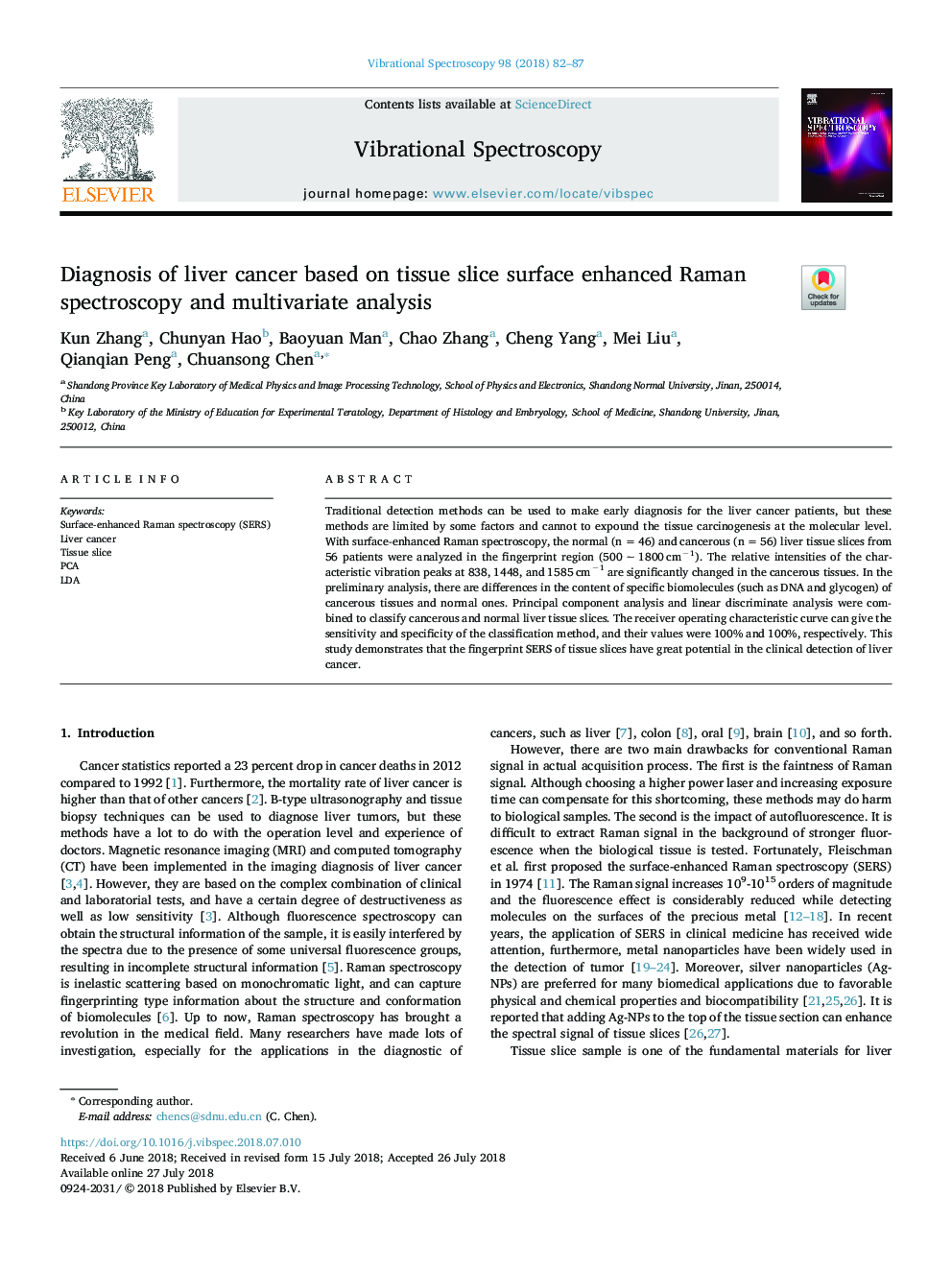| Article ID | Journal | Published Year | Pages | File Type |
|---|---|---|---|---|
| 7690542 | Vibrational Spectroscopy | 2018 | 6 Pages |
Abstract
Traditional detection methods can be used to make early diagnosis for the liver cancer patients, but these methods are limited by some factors and cannot to expound the tissue carcinogenesis at the molecular level. With surface-enhanced Raman spectroscopy, the normal (nâ=â46) and cancerous (nâ=â56) liver tissue slices from 56 patients were analyzed in the fingerprint region (500ââ¼â1800âcmâ1). The relative intensities of the characteristic vibration peaks at 838, 1448, and 1585âcmâ1 are significantly changed in the cancerous tissues. In the preliminary analysis, there are differences in the content of specific biomolecules (such as DNA and glycogen) of cancerous tissues and normal ones. Principal component analysis and linear discriminate analysis were combined to classify cancerous and normal liver tissue slices. The receiver operating characteristic curve can give the sensitivity and specificity of the classification method, and their values were 100% and 100%, respectively. This study demonstrates that the fingerprint SERS of tissue slices have great potential in the clinical detection of liver cancer.
Related Topics
Physical Sciences and Engineering
Chemistry
Analytical Chemistry
Authors
Kun Zhang, Chunyan Hao, Baoyuan Man, Chao Zhang, Cheng Yang, Mei Liu, Qianqian Peng, Chuansong Chen,
